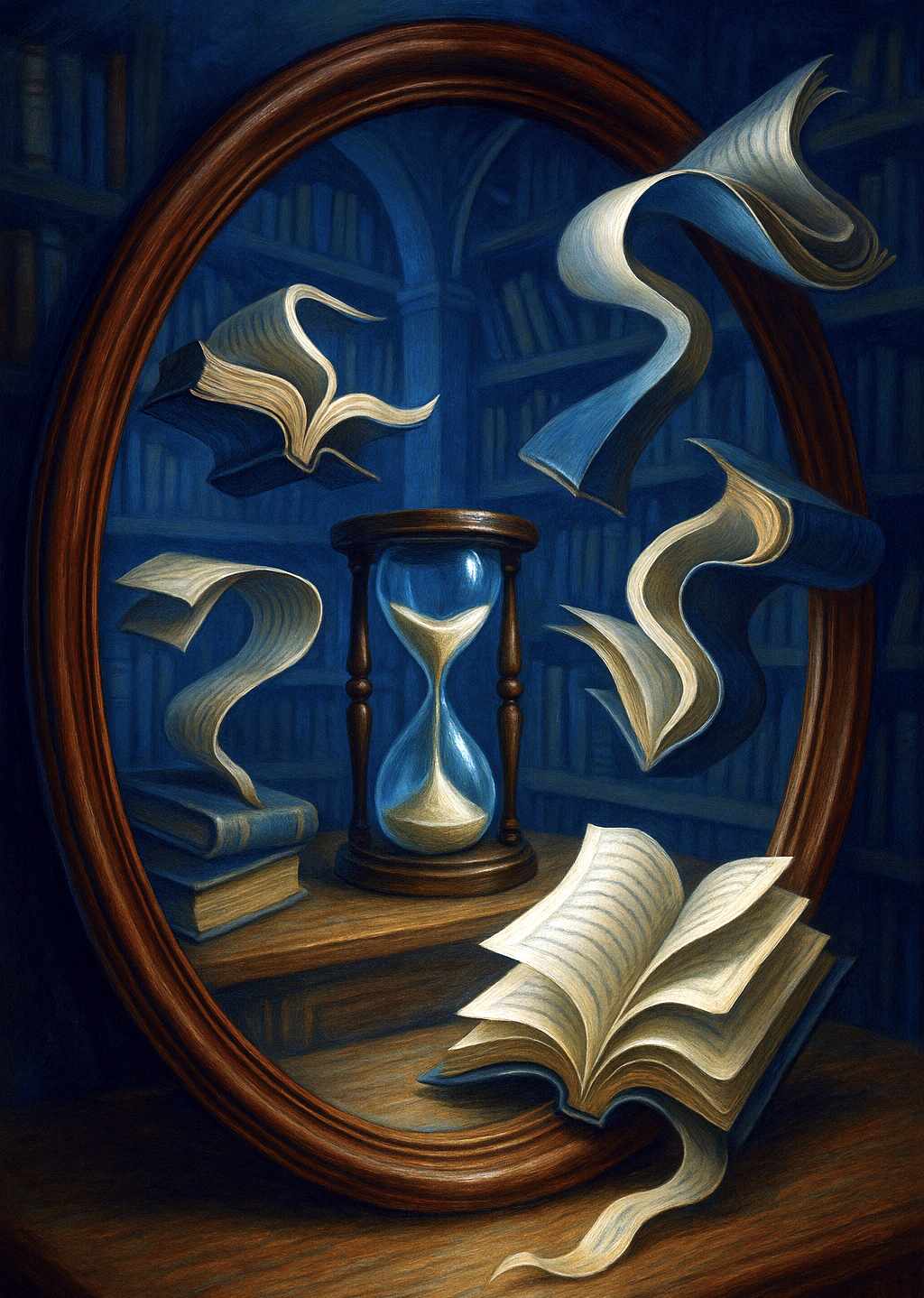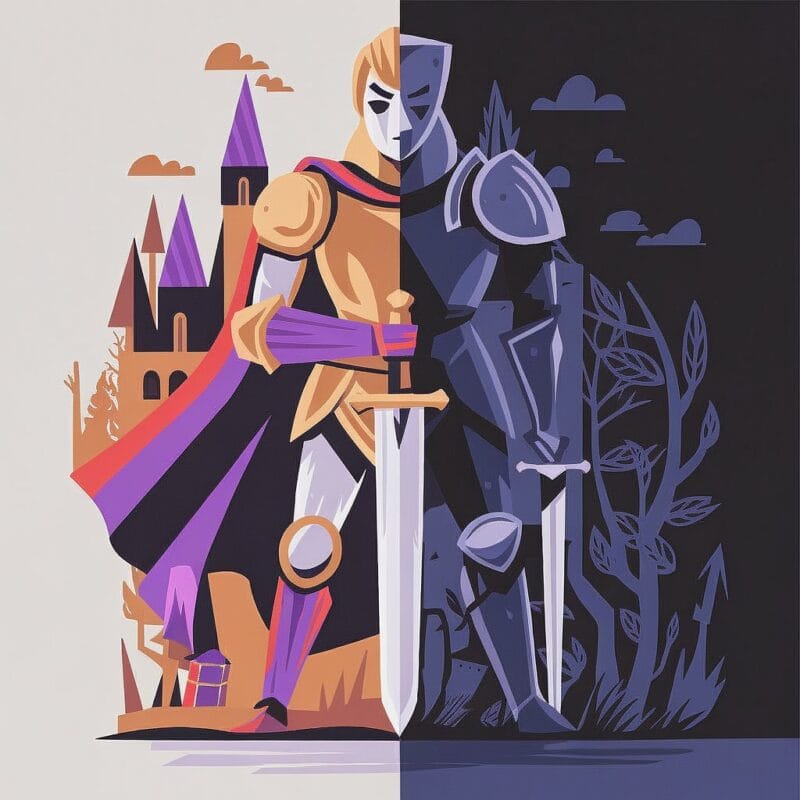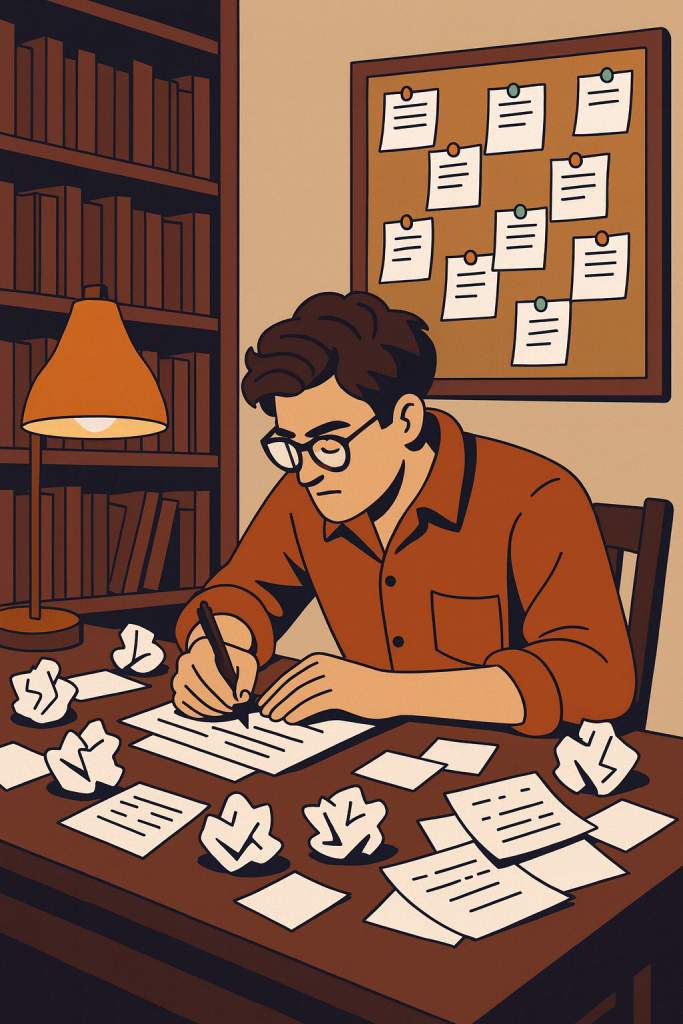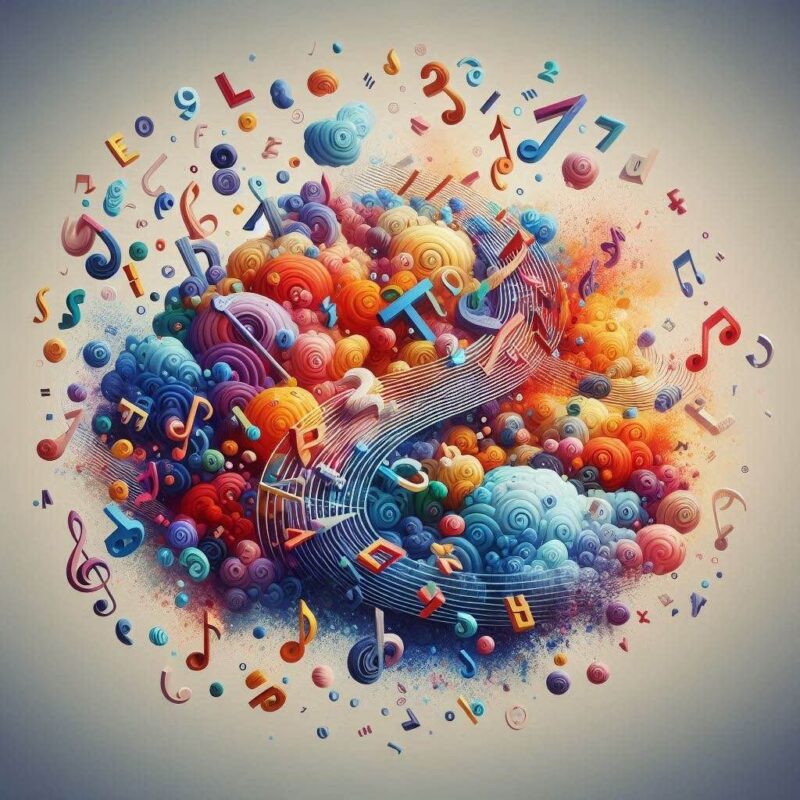A man stands before a court and never learns his crime. A government proclaims ignorance as strength. A poet argues that excess leads to wisdom. These are not linguistic mistakes; they are intentional challenges to logic that push against coherence until a profound or unexpected idea emerges. Writers are drawn to them because of the intellectual pressure they generate and the insight they release.
Defining Paradox
Paradox in literature refers to a rhetorical or structural device that presents opposing or contradictory ideas within a unified expression, one which violates surface logic while still producing a kind of internal coherence. The contradiction may appear illogical on the surface, yet it creates a sense of internal plausibility or exposes a deeper truth through its instability.
A paradox can structure a single phrase, define a character’s worldview, or even determine the entire architecture of a story. What defines a paradox is not merely opposition, but the simultaneous truth of both opposing elements. Unlike irony, which suggests a gap between appearance and reality, paradox brings both into a single point of tension. It pulls the mind in two directions and demonstrates how both ideas can coexist.
Holding the Tension
When handled with precision, paradox serves as a highly effective mechanism in literature. These literary oppositions never promise balance; they maintain tension indefinitely. In poetry, paradox functions as a type of compression, binding opposing ideas so tightly that neither element can escape.
Example:
In John Donne’s “Death, be not proud” (1633), death is both personified and defeated: “Death, thou shalt die.” The line refuses logical consistency. Death cannot die. And yet the poem relies on this contradiction to assert the possibility of transcendence. The paradox is the point.
Types of Literary Paradox
- Verbal or Rhetorical Paradox: This is the most immediately recognizable form. It resides in a phrase or sentence that contradicts itself in meaning yet remains grammatically intact.
Example: Oscar Wilde’s aphorism, “I can resist everything except temptation,” creates a self-defeating logic that gestures toward a deeper irreconcilability within human desire. The wit functions through contradiction, but the paradox holds because it reveals a durable human tension. - Structural or Thematic Paradox: In longer works, paradox can take the form of a character arc, a narrative situation, or the entire thematic core of a story. Instead of being confined to sentences, these paradoxes stretch across plots and interpretive systems.
Example: In George Orwell’s 1984 (1949), the Party’s slogans—War is Peace, Freedom is Slavery, Ignorance is Strength—construct an institutional paradox. These are not random reversals but contradictions that maintain control by destroying the basis of logic. They function as a reality built solely from coerced opposition.
Why Writers Use It
Writers use paradox to achieve several effects:
- To sharpen internal conflict
- To dramatize opposing values or emotions
- To mirror the absurdity of institutions
- To deepen an idea by presenting it obliquely
- To avoid closure or definitive meaning
Because a paradox does not resolve, it has a lingering influence. It leaves the reader reflecting, rereading, and confronting the possibility that the opposing views are a permanent condition. Paradox thrives in absence of certainty, where the writer conveys a truth that cannot be explained in simple terms.
More Literary Examples of Paradox
- William Blake’s The Marriage of Heaven and Hell (1790): In the line “The road of excess leads to the palace of wisdom,” Blake’s use of paradox breaks moral binaries wide open. Here, indulgence doesn’t lead to destruction but to revelation. Blake constructs an entire poetic vision around such reversals, proposing a paradoxical ethics in which contradiction is generative and not destructive, using paradox as both a spiritual and aesthetic method.
- Franz Kafka’s The Trial (1925): A man is arrested without explanation and prosecuted without ever knowing the charge. Like many of Kafka’s characters, Josef K. becomes a figure of impossible striving within invisible constraints. The legal system becomes a closed loop of unreason. Kafka’s paradox is bureaucratic and metaphysical: the more one seeks clarity, the more it recedes. The search itself sustains the absurdity.
- William Faulkner’s The Sound and the Fury (1929): In Faulkner’s disjointed narrative, time moves forward yet breaks apart, memory is shifting yet anchored, and characters exist inside temporal loops they cannot escape. Faulkner’s style builds its disorienting power through a paradox: a chaotic structure that generates coherent emotional force.
- Emily Dickinson’s Poems: Dickinson often constructs paradoxes that hold pain and ecstasy in the same line. In “I’m Nobody! Who are you?”, the contradiction is in visibility: to be “nobody” is to be free, and to be “somebody” is to suffer exposure. The paradox transforms anonymity into privilege.
- George Orwell’s 1984 (1949): Few literary phrases have etched themselves into cultural memory like the Party slogans in the novel: War is peace. Freedom is slavery. Ignorance is strengt. These are not just paradoxes; they are mechanisms of control. Orwell doesn’t just use contradiction for play; he shows how authoritarian regimes disfigure language until opposition becomes indistinguishable from truth. The slogans are pure paradox, engineered to numb the mind into obedience.
- Joseph Heller’s Catch-22 (1961): The novel’s central rule defines the logic of paradox: a bomber pilot can be grounded if he is insane. But requesting to be grounded proves he is sane. This closed loop traps the characters in a system where rationality disqualifies itself. The titular Catch-22 is a bureaucratic paradox, looping endlessly, rendering protest futile. It’s not merely a joke but a structural principle of madness.
Paradox vs. Oxymoron: A Brief Note
While often mentioned together, paradox and oxymoron function at different scales and carry different magnitude. An oxymoron compresses contradiction into a single, striking phrase. It hinges on juxtaposition: “bittersweet,” “deafening silence,” “cruel kindness.” These expressions jolt the ear and momentarily challenge comprehension, yet they resolve quickly into familiarity or poetic effect.
Paradox, on the other hand, sustains opposition across a larger scope. It spans sentences, thoughts, or entire works. Its tension does not resolve but rather amplifies with interpretation. Where oxymoron surprises, paradox destabilizes. It challenges not only language but also the assumptions beneath it.
Writers utilize paradox when language cannot contain a complex idea, when simplification distorts it, when opposing elements must remain simultaneously present, or when excessive clarity removes necessary ambiguity. Paradox provides a method to confront irreducible truths, and its opposition is essential to this task. Consequently, authors continue to employ it when other techniques prove inadequate.
Further Reading
20 Paradoxes That Will Boggle Your Mind by Paul Anthony Jones, Mental Floss
On Paradox with Elizabeth S. Anker by Money on the Left
Cleanth Brooks’ Concept of Language of Paradox by Nasrullah Mambrol, Literariness.org




